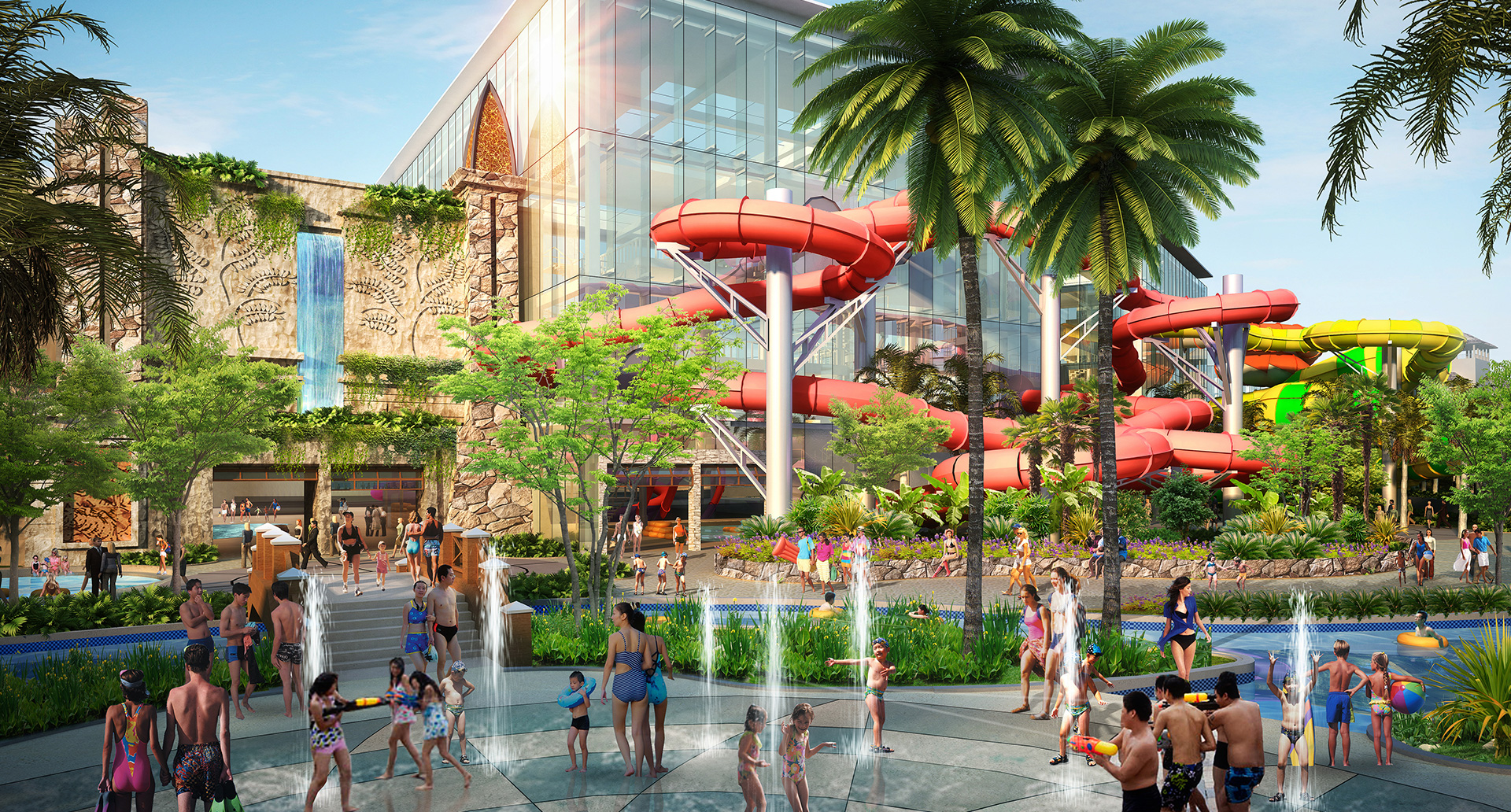What do Goldilocks and water park planning have in common? Allow us to explain.
We are often asked, “How big should my water park be?” The simple answer is, it depends.
Water parks are complex, entertainment experiences where families of all ages come to spend their precious leisure time together. Guests may come for a day, or several days, particularly if the water park is part of a larger resort complex, a second gate to a theme park or other entertainment destination.
Getting the size “just right” really does matter. A park that is undersized and crowded will create a poor guest experience, while a park that is over-sized may be a financial disaster for the investors.
Let’s look at a few of the many factors FORREC considers when we answer, “How big should my water park be?”
1. Has a feasibility study been completed that predicts annual attendance for year one and for future attendance beyond year five?
2. What is the warranted investment for the water park based on attendance plus sales?
3. What is the local region and climate? Will the climate support a year-round outdoor water park?
4. Will the water park be seasonal (110-120 days per year), or will the water park be open most or all of the year?
5. Should the water park be outdoors and seasonal, indoors and year-round, or a combination of indoor/outdoor for year-round use?
6. What is the target guest profile and demographic? What is their desired guest experience?
7. What will the “peak in park” attendance be (i.e. instantaneous attendance)?
These are just a few of the many questions that need to be answered to help us plan a successful entertainment facility for you.
We can illustrate the answers to most of these questions and planning principles using an example scenario of a new water park we will call Splash Down. The investors of said park are savvy, experienced business people who have created a solid business plan. They decided not to hire a feasibility consultant to save money and, based on their personal research, have a good understanding of the local market.
Their proposed site is adequate at 25 ha in size. They hope to use most of the land to build a “really impressive water park, bigger and better than anyone else”. Based on their research, they have determined that the water park, excluding on-site parking, should be at least 15 ha in size, because it will be much bigger than the closest competitor who is less than a 1.5 hour drive away. The owners have a friend who sells water park rides and created a plan that they say will really impress and wow the guests using their newest and coolest rides. The owners seem happy with the plan and want to proceed immediately. However, the big bank requests an objective review of the optimistic business plan from an experienced resource that designs water parks. They contact FORREC to look at their water park plan to make the bank happy.
Their site is in a region that rarely has snow but is too cold to support a year-round outdoor park. Wisely, the owners decide to start with an outdoor water park and if the market supports them, add a small indoor water park in the future. They have estimated their peak in park will be 3,500 guests. Their current design illustrates ideas for the impressive 15 ha (150,000 m2) water park. Using generally accepted planning ratios, which vary globally and regionally for outdoor water parks (excluding parking), we can test the size they really require.
For this climatic region, assuming their peak in park of 3,500 guests, we’ll use a comfortable outdoor area per person of 13-15 m2. For 3,500 guests, an area of 13-15 m2 per person equals 45,500-52,500 m2. This area is far less than the 150,000 m2 (15 ha) the owners have planned for.
If you are asking why this was done, the reason is simple. We are planning the park area based on requirements for comfortable space per guest rather than planning for what rides and attractions fit on their 15 ha site. We’re planning with a realistic and reasonable metric (per person) to plan for what is required, rather than what will fit onto the site. Using the same area metric per person, their 15 ha site would accommodate between 10,000 to 11,500 people, which is far larger than what they think the market can handle. Clearly, they do not need to build a park for the entire 15 ha site based on the estimated number of guests. Now what happens if we consider their future idea for year-round use, including a future indoor water park?
The owners have completed research and think that a reasonable peak in park attendance in the winter is 1,000 guests. Again, using generally accepted planning ratios which vary globally and regionally for indoor water parks (excluding parking), we can determine the indoor size required. For 1,000 guests, we’ll allow a reasonable area of 7-8 m2 per person which requires 7,000-8,000 m2 for the indoor water park. If we combine the planned area for a future indoor water park with the planned area for the outdoor water park, we have combined areas of:
Outdoor water park at 45,500 – 52,500 m2 + Indoor water park at 7,000-8,000 m2
= 52,500-60,500 m2.
This combined area of the outdoor and indoor facility is still less than half the 150,000 m2 area the investors wanted for their impressive water park. Seeing this, they think it’s best to just create an entirely indoor water park because it is less than half the area of the outdoor water park.
Before we plan this, let’s consider the capital investments for both indoor and outdoor facilities.
An indoor water park cost is three to four times the cost per m2 of an outdoor water park due to infrastructure and building requirements to support an appropriate indoor climate. Creating a year-round outdoor and indoor facility can make good economic sense with the correct market and guest demographics.
In the above scenario of Splash Down, we can see that using objective planning principles, the area required for the outdoor water park plus future indoor expansion can easily be accommodated on the owner property. In fact, it requires far less land and investment than the “really impressive water park” they planned for.
Much like our connoisseur of taste and comfort Goldilocks, the correct answer to, “How big should my water park be?” is, “Just right”. Goldilocks was on to something by testing and finding the perfect fit to what suited her tastes. In water park planning, size matters and it can enhance guest experience and create an ROI for investors.




